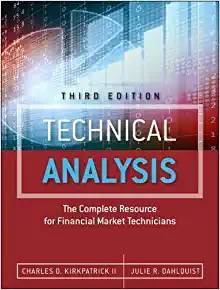Answered step by step
Verified Expert Solution
Question
1 Approved Answer
Need help with the attached please. Let me know if you have any questions. THanks Question 1 A convertible bond is Question 2 Hedging Question
Need help with the attached please. Let me know if you have any questions.
THanks
 Question 1 A convertible bond is Question 2 Hedging Question 3 Viewing things in terms of options Question 4 You ask a staff person to get you some financial information. The staffer returns with the following information: a stock is selling for $28.07, a call option expiring in 8 months with a strike price of $30 is selling for $2.60, and a put option expiring in 9 months with a strike price of $30 is selling for $2.01. Question 5 A bond can be redeemed by its owner for its face value after either 5 or 10 years. So at the end of 5 years, the bondholder must make a one-time choice to either redeem the bond then or let it continue for 5 more years. This complex financial security can be described as Question 6 Suppose you own a convertible bond that has a 6.1% coupon (paid semi-annually), $1,000 par value, matures in 11 years, and is currently selling for $1,783.54 in the bond market. The bond can be converted into 38 shares of the firm's common stock, and the common stock is currently selling for $45.72 per share. What is this bond's yield to maturity? Question 7 Suppose you own a convertible bond that has a 6.1% coupon (paid semi-annually), $1,000 par value, matures in 11 years, and is currently selling for $1,783.54 in the bond market. The bond can be converted into 38 shares of the firm's common stock, and the common stock is currently selling for $45.72 per share. Should you convert the bond into shares of stock? Hint: Think carefully (in terms of the "big picture") before answering. You're answer should either start with "Yes, because" or "No, because." Question 8 A stock currently sells for $67.38. A call option expiring in 8 months with a strike price of $70 sells for $4.63. A put option with the same strike price and maturity sells for $5.93. What APY (effective annual) riskless rate of return is implied by these stock and option prices
Question 1 A convertible bond is Question 2 Hedging Question 3 Viewing things in terms of options Question 4 You ask a staff person to get you some financial information. The staffer returns with the following information: a stock is selling for $28.07, a call option expiring in 8 months with a strike price of $30 is selling for $2.60, and a put option expiring in 9 months with a strike price of $30 is selling for $2.01. Question 5 A bond can be redeemed by its owner for its face value after either 5 or 10 years. So at the end of 5 years, the bondholder must make a one-time choice to either redeem the bond then or let it continue for 5 more years. This complex financial security can be described as Question 6 Suppose you own a convertible bond that has a 6.1% coupon (paid semi-annually), $1,000 par value, matures in 11 years, and is currently selling for $1,783.54 in the bond market. The bond can be converted into 38 shares of the firm's common stock, and the common stock is currently selling for $45.72 per share. What is this bond's yield to maturity? Question 7 Suppose you own a convertible bond that has a 6.1% coupon (paid semi-annually), $1,000 par value, matures in 11 years, and is currently selling for $1,783.54 in the bond market. The bond can be converted into 38 shares of the firm's common stock, and the common stock is currently selling for $45.72 per share. Should you convert the bond into shares of stock? Hint: Think carefully (in terms of the "big picture") before answering. You're answer should either start with "Yes, because" or "No, because." Question 8 A stock currently sells for $67.38. A call option expiring in 8 months with a strike price of $70 sells for $4.63. A put option with the same strike price and maturity sells for $5.93. What APY (effective annual) riskless rate of return is implied by these stock and option prices Step by Step Solution
There are 3 Steps involved in it
Step: 1

Get Instant Access to Expert-Tailored Solutions
See step-by-step solutions with expert insights and AI powered tools for academic success
Step: 2

Step: 3

Ace Your Homework with AI
Get the answers you need in no time with our AI-driven, step-by-step assistance
Get Started


